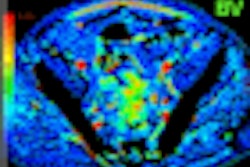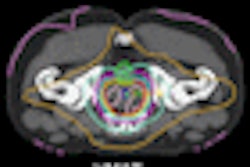A Canadian cancer center has been hit with a class action lawsuit claiming that hundreds of patients received improper levels of radiation during radiation therapy treatments over a three-year period.
Attorneys acting on behalf of 326 patients who received radiation therapy at the Ottawa Hospital Cancer Centre in Ontario filed the lawsuit for $30 million Canadian ($24.7 million U.S.) on December 18 with the Ontario Superior Court of Justice. The complaint claims that between November 2004 and November 2007, 620 patients received 1,019 curative and palliative radiation therapy treatments for skin cancers from an orthovoltage radiation therapy unit that had not been accurately recommissioned when it was moved from the hospital's General Campus to its Civic Campus in October 2004.
Treatment for 326 of the patients was for curative intent, and an unspecified number of these patients received doses as low as 83% of the radiation prescribed. Patients treated at the center for more aggressive melanoma skin cancer were not affected.
David John Watts, the representative plaintiff in the suit, claims that failure to receive the prescribed radiation dose for treatment of basal cell carcinoma in March 2006 was responsible for a recurrence of the cancer in the same location in May 2008.
The basal cell carcinoma was located on Watts' nose, and because he could not receive additional radiation therapy, the lawsuit alleges that Watts "had to undergo surgery ... at a hospital in Toronto where doctors removed six sections of skin tissue from one side of his nose." After the surgery to remove the cancer, Watts suffered from considerable pain and discomfort in his nose and from damaged nerves, as well as permanent alteration of the appearance of his nose and breathing difficulties, according to the claim.
The errors associated with the orthovoltage unit, a radiation therapy device used to treat superficial, small tumors such as skin cancers, were not caught until November 29, 2007. At that time, Brenda Clark, Ph.D., head of medical physics, filed an incident report with the hospital. This "calculation error" was not publicly revealed by Ottawa Hospital until April 21, 2008. In a press release, the hospital stated that an unspecified number of patients had received radiation treatment of up to 17% less than the prescribed dose, but that no patients had received doses greater than those prescribed.
The patients were officially notified by the hospital between April 22 and April 25, but by then a number of them had already learned of the situation from the local and national news media. The patients were requested to schedule immediate follow-up appointments with the physicians who had treated them, and a special patient clinic was opened on April 26.
In its April 21 announcement, the hospital also stated that it would retain a medical expert to conduct an independent review. The expert would be tasked with determining why output tables were incorrectly prepared during recommissioning of the orthovoltage unit, why an independent second check had not been performed prior to release of the output tables, and why the error had not been detected for three years.
To investigate, Cancer Care Ontario of Toronto, a provincial agency responsible for continually improving cancer services, in May 2008 contacted the Alberta Cancer Board of Edmonton, which appointed a panel of experts chaired by Peter Dunscombe, Ph.D., director of the department of medical physics at Tom Baker Cancer Centre in Calgary, Alberta, and professor of oncology at the University of Calgary. Their findings, which included recommendations for change, were published in October 2008.
What happened?
Understaffed and overworked
After the orthovoltage unit had been relocated, a medical physicist incorrectly calculated radiation output tables for all four beam qualities and for all field sizes other than 10 x 10 cm². The error was due to the omission of a backscatter conversion factor for all fields other than 10 x 10 cm².
Output tables relate to the absorbed dose delivered under the prescribed clinical conditions of beam energy and field size to a setting on the machine referred to as monitor units. Radiation therapists use output tables to convert a physician's prescribed radiation dose to the number of monitor units to be set and delivered.
At the time the output tables were being calculated, medical physicist staffing levels had been experiencing extreme resource limitations, according to the panel's report. The situation was further exacerbated by the increasing demands of new equipment commissioning, software equipment upgrades, and urgent requests by the Canadian Nuclear Safety Commission. Presumably because of this, the orthovoltage recommissioning process was completed by a single physicist. A second physicist was involved only at the end of the process, retrospectively checking calculations of output under reference conditions.
In the opinion of the review panel, this was a significant contributory factor, "although a direct causal relationship between medical physics staffing shortages and the specific calibration error cannot be established with certainty," the report stated.
The panel further noted that introduction of new clinical programs and equipment without adequate consideration of the implications for medical physics resources occurred because of the "cultural norm in place at the time," and the importance of medical physics for the safety and quality of highly specialized cancer treatments employing large doses of radiation "appears not to have been adequately recognized."
In fact, only six of 11 medical physicist positions were available to perform clinical duties, and all six had been working up to 60 hours per week for an extended period of time, the panel discovered. There was no effective mechanism in place to monitor the workload of the physicists at a time when almost half the staff was unavailable, according to the report.
No formal written protocol for orthovoltage commissioning or recommissioning existed, nor were there provincially or nationally approved standards or protocols available for use. Because orthovoltage units are being discontinued in most Canadian cancer centers, the panel speculated that recommissioning of the unit was not a high priority, and for this reason the appropriate level of medical physics resources were not assigned.
Quality control failure
The medical physics department did not conduct a comprehensive, independent second check of the clinical data generated during the recommissioning process, according to the report. The only checks that appear to have been performed were calculations of output under reference conditions, specifically to verify the accuracy of the calculations for the 10 x 10 cm² cones. Ironically, these were the calculations that had been accurately made.
The report noted that the tables released for clinical use did not contain the signature of a second physicist confirming the accuracy of the data. No confirmatory experimental measurements appear to have been made, the experts determined.
One of the reasons for this failure was that only four hours were available to perform the second check prior to clinical release, severely limiting the extent of second checking that could be done. The data checked did not include the conversion of the in-air charge measurements to the dose to water-in-water for all cone sizes and energies.
'Spotty and inadequate quality assurance'
In addition, the cancer center did not have an adequate formal written quality protocol implemented for orthovoltage units. The expert panel noted that while daily quality control checks were performed by the radiation therapists, monthly and annual quality control protocols had not been thoroughly implemented. Failure to detect the error for 35 months was related to the lack of comprehensive and standardized quality control protocols for orthovoltage units, including the absence of national and/or provincially mandated standards.
It was not until 2005 that a Canadian Association of Provincial Cancer Agencies (CAPCA) standard was approved and published. The cancer center's decision to fully implement the CAPCA performance standards for orthovoltage units led to the discovery of the error. The experts stated that the error was not large enough to be noticed by the radiation therapists and radiation oncologists who worked with the equipment.
Changes recommended by the panel have been fully implemented, according to CBC News reports.
Ottawa Hospital said it would review the claim and seek legal advice, but declined to comment further on the litigation, according to Allison Neill, director of media relations.
By Cynthia Keen
AuntMinnie.com staff writer
December 30, 2008
Related Reading
Parents sue California hospital over pediatric CT radiation overdose, November 20, 2008
Options abound for radiation therapy QC, August 19, 2008
QA tool cuts errors in radiation department, August 6, 2008
Copyright © 2008 AuntMinnie.com



















